Learning about our own traumatic experiences helps us recognize behavioral or emotional patterns that we resort to in order to protect ourselves. This lets us turn down the volume of our inner critic and understand how our experiences shape who we are today.
If you’re a yoga teacher, massage therapist, coach, manager or somebody whose job it is to hold space for others, it’s important that you listen to this episode!
Today, we discuss what being trauma-informed really means with mental healthy clinician scientist, Dr. Megan Kirk Chang.
It’s important to have a trauma-informed approach because it helps you better hold space for others. We’ve all been through hardships and you don’t know who is still experiencing trauma. Rather than avoid or hope that everybody is fine, there are some easy things that you can do to be more inclusive.
Listen in to discover:
What happens in your body when you experience a trauma (regardless of how big or small you judge the incident to be)
What it means to be a trauma informed practitioner and examples of how to hold trauma-informed space
A deeper look into what your physiology does to protect you and how that response, if strong enough, affects you moving forward
We nerd out a little and take a dive into some different parts of the nervous system
How to soothe yourself via the nervous system when you’re feeling unsafe in a safe environment
If you want to learn more about how experiences like trauma, shape your life today, also listen to Understanding Emotional Trauma And How To Heal It with Linda Thai
About Megan Kirk Chang
Dr. Megan Kirk Chang is a clinician scientist in the field of clinical mental health. Her intervention-based research explores the impact of mindfulness-based programs on cultivating resilience and growth after extreme exposure to stress, burnout, or trauma. Megan's work blends cognitive neuroscience, trauma-informed yoga and meditation, and empowerment coaching to help organizations and survivors reclaim their mind-body connection, return to a sense of aliveness, heal their nervous system, and release limiting beliefs. Megan recently graduated with her PhD from York University where she launched the first registered clinical trial in Canada to investigate an integrated CBT, Mindfulness and Yoga intervention for young adults with PTSD and used new wearable health technologies to capture the changes in autonomic function during mindfulness.
Examining Trauma as a Universal Human Experience
Learning about our own traumatic experiences helps us recognize behavioral or emotional patterns that we resort to in order to protect ourselves. This lets us turn down the volume of our inner critic and understand how our experiences shape who we are today. Megan looks trauma through the lens of physiology which means that Instead of subjectively rating traumatic events, she focuses on the universal human experience of these events (e.g., shock traumas or repetitive exposures to trauma). Learn more at [06:00].
How Our Bodies Respond to Stress and Trauma
At [12:45], Megan examines how trauma and daily stressors impact our autonomic nervous system without us even being aware of it. Our sympathetic nervous system (the flight, fight or freeze part of our autonomic nervous system) mobilizes to meet that stressor’s (anything that stresses us out - tiger or angry boss… our body can’t discern the difference) demand (e.g., our heart rate increases, our pupils dilate,…).
When the threat or stressor is removed, our parasympathetic system (rest and digest part of the autonomic nervous system) returns us to homeostasis. Our heart rate returns to normal.
Problems arise when the stimulus is so shocking or repetitive that our capacity to digest these events become increasingly challenging and alters our physiology. We might get stuck oscillating between two states: hypervigilance and dissociation. Both states aren’t ideal as it takes us away from feeling peaceful. Listen at [12:45] for more.
Understanding Our Physiology - How It Helps Us Survive (trauma response) and How To Soothe It
Megan’s mission in life is to help people understand that their nervous system is doing what it needs to do to keep them surviving. In a stressful or shocking moment, it perceives your environment as unsafe, altering your physiology, and moving into a state of hypervigilance or dissociation.
This state of dissociation is the sensation of feeling separate from your body or zoned out. This state can be examined further by looking at the dorsal vagal complex; this nerve shuts down the body as a defense strategy to avoid psychological or bodily harm. It’s important to understand that this response isn’t a choice. It’s important to understand because we might judge ourselves for not “responding better”. When you understand that it’s the body’s automatic response to help save you, it helps drop the self-judgement and instead allow you to approach yourself with much more compassion. Tune in at [16:00] for more on physiological trauma responses.
Down-Regulation and Up-Regulation Strategies
The ventral vagal nerve relates to our social engagement and safety state. When we’re not in ventral vagal safety, we can’t pick up on social cues as much because we’re in survival mode or a dissociative state. Reconnecting to our sense of security can be achieved through different strategies but which strategy to use largely depends on each individual’s experienced trauma. Some examples are:
Laying a hand to your heart
Singing
Deep breathing
Rocking
Dancing
Progressive Muscle Relaxation
Gardening
For more of these strategies, go to [23:00].
Reframing Healing as a Life-Long Journey
At [33:40], we recommend unlearning the conventional use of the word “fix” and instead reframe healing as a continuous, life-long, and self-healing journey.
It’s exhausting (and might not even be possible) to find an end-all solution or anticipate all triggers for trauma. Embracing it as a journey helps us remove self-judgment rather than rushing to fix everything. Megan shows us that there’s power in the pause and stillness. By not overdoing it and taking well-earned breaks, we can create a balance of healing and living.
It’s also essential to emphasize putting the onus, or the responsibility, on society and institutions. The continuing marginalization of certain groups, and the privilege of others, play a significant role in trauma and trauma recovery. Listen at [33:40] for more.
**Trauma-Informed Care as a Wellness Practitioner**
This part is so important for everyone to understand especially if your work involves holding space for others (yoga teacher, coach, massage therapist, employer…).
The trauma-informed approach is not a certification of completion but rather a way of living.
Megan suggests Hopper and colleagues’ definition of trauma-informed care, which defines it as a strength-based service delivery approach emphasizing safety and agency. As wellness practitioners, we can practice trauma-informed care with our clients and students by creating a safe and collaborative space.
It’s important to have a trauma-informed approach because it helps us, especially wellness practitioners, better hold space for others. We’ve all been through hardships and you don’t know who is still experiencing trauma. Rather than avoid or hope that everybody is fine, there are some easy things that you can do to be more inclusive.
For example, as yoga instructors, we can be mindful of where we place yoga students (ie. not backing them against a wall) or how we teach (ie. cue and teach from a place of invitation or suggestion rather than a demand). As employers, especially after the trauma some may have experienced due to the pandemic, checking in with employees with a simple “how are you?” is effective. If possible, offer a gradual transition back to the work place. Tune in at [46:30] for more insights into trauma-informed care.
Trauma Has No Hierarchy and No Boundaries
Megan shares that the conventional or mainstream definition of trauma is too rigid and narrow. As a result it excludes many different types of trauma. This means that many of us might have not admitted to (or realized) having experienced trauma. In contrast, being trauma-informed means that we assume everyone has protective survival mechanisms that we try to accommodate for. It opens up a dialogue for learning and growth. But note that it doesn’t mean we will be perfect (or have to be perfect) at it. Megan also highlights that managers, wellness practitioners, school educators, basically anyone and everyone, can use this approach to create a trusting and supportive space. Go to [55:00] for more!
KEY NUGGETS:
[06:00] Examining Trauma as a Universal Human Experience
[12:45] How Our Bodies Respond to Stress and Trauma
[16:00] Understanding Our Physiology - How It Helps Us Survive (trauma response) and How To Soothe It
[23:00] Down-Regulation and Up-Regulation Strategies
[33:40] Reframing Healing as a Life-Long Journey
[46:30] Trauma-Informed Care as a Wellness Practitioner
[55:00] Trauma Has No Hierarchy and No Boundaries
RESOURCES:
Learn more about how experiences like trauma, shape your life today with this episode - Understanding Emotional Trauma And How To Heal It with Linda Thai
Trusting the Gold: Uncovering Your Natural Goodness by Tara Brach, Ph.D.
Somatic Experiencing method developed by Peter Levine, Ph. D.
Hopper, E. K., Bassuk, E. L., and Olivet, J. (2010). Shelter from the storm: Trauma-informed care in homeless service settings. The Open Health Services and Policy Journal, 3, 80-100
Connect with Megan:
Website: www.healmytraumaimprint.com
Instagram: @drkirkchang
Email: info@healmytraumaimprint.com
QUOTES:
“The impact of a traumatic stimulus completely alters our nervous system physiology.” - Megan [14:45]
“This journey of healing is not something we cross a finish line with . . . but rather we get to have the privilege of walking along this healing journey for our lives.” - Megan [36:30]
“There’s power in the pause, and power in the stillness.” - Megan [45:35]
“Trauma-informed really is about giving choice back to the survivor in ways that empower them.” - Megan [48:25]
“Everyone has experienced some form of hardship . . . let’s just assume that we all have our own protective survival mechanisms.” - Megan [56:00]
“[Trauma-informed is] recognizing where the discomfort might be.” - Megan [1:03:18]






















